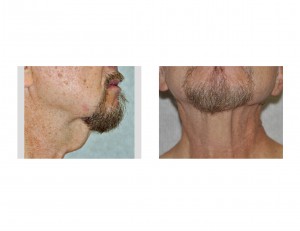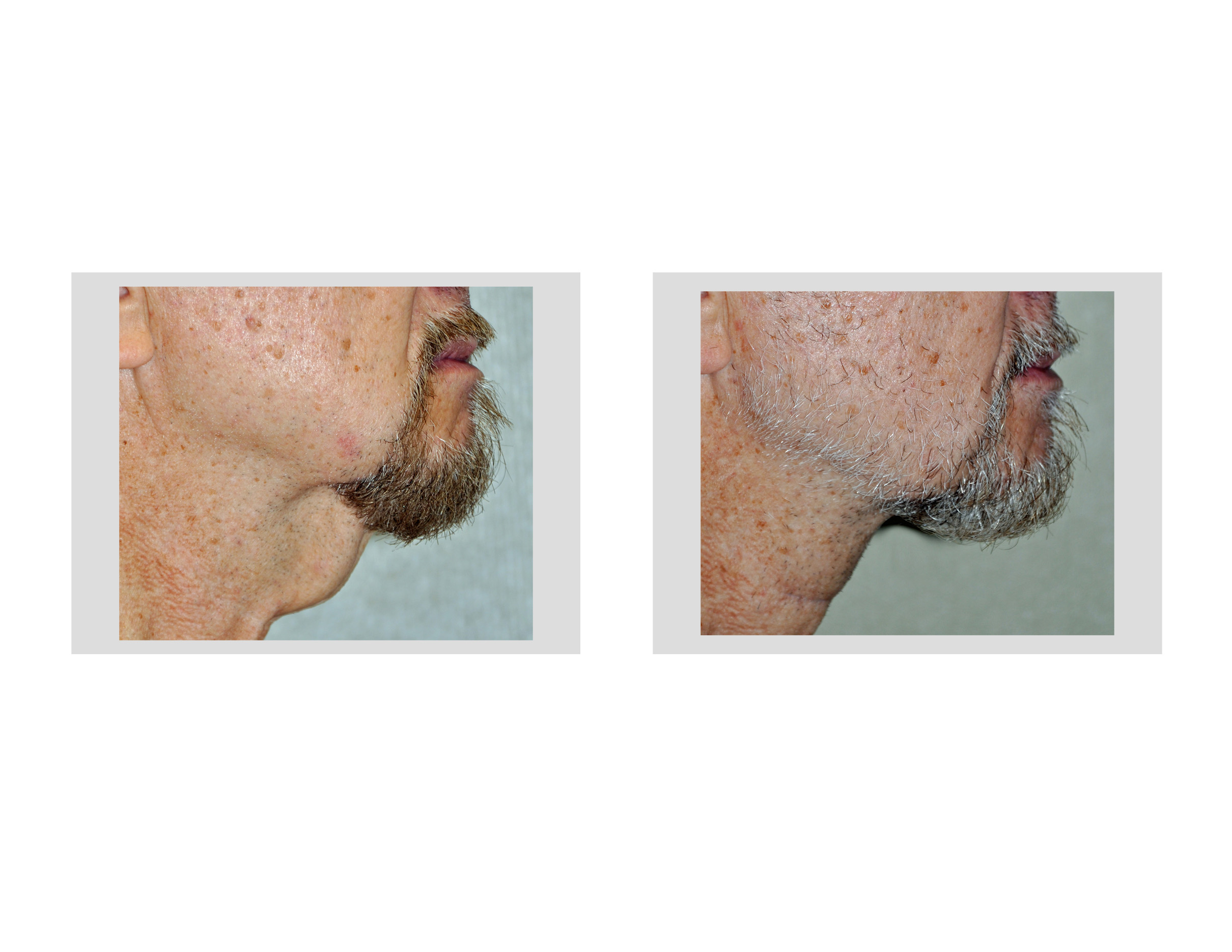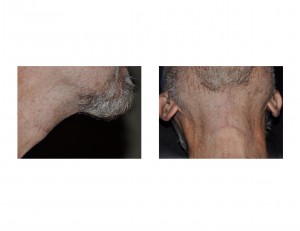Background:While the face in men ages just like in women, their primary concern is often largely that which occurs in the neck. As the male neck ages, it often hangs down like a wattle. While it does contain fat and the platysma muscle has separated in the midline, the loose skin makes up the biggest part of the sagging neck tissues. Often called a turkey neck or neck wattle, this neck appearance not only shows one’s age but gets in the way of any neck conforming clothing.
While there is little question that a traditional neck-jowl lift (aka facelift) is the aesthetically preferred approach for neck correction, many older men simply don’t want it. There are a lot of reasons why including extent of the surgery, amount of recovery, visible scars around the ears and cost. While some plastic surgeons may be uncompromising about a facelift only approach, there are older men who will rather live with their neck problem than undergo a facelift.
The direct neck lift has been around for a long time. I suspect that its history goes back to the infancy of facelift surgery where direct loose skin removal was the only surgical option. In an era of limited anesthesia and rudimentary surgical techniques and instruments, the easiest and fastest solution was used. In today’s world, the easiest approach is chosen when recovery and cost are the limiting factors.



Interestingly, he stated that no one ever noticed that he had undergone any surgery or asked about it. I suspect his goateehelped distract or hide anything that happened in the neck But everyone did say he looked refreshed and more youthful.
Case Highlights:
1)Older men with neck wattles or turkey necks desire a simple solution to their aging neck concerns. They do not want a traditional facelift.
2)The direct neck lift provides a simple and extremely effective neck contouring procedure with minimal recovery.
3)The aesthetic liability of the direct neck lift is a scar but this is minimized due to the hair-bearing skin of the male neck.
Dr. Barry Eppley
Indianapolis, Indiana


